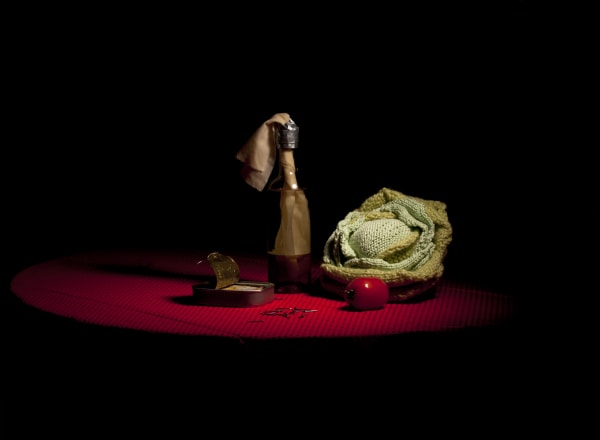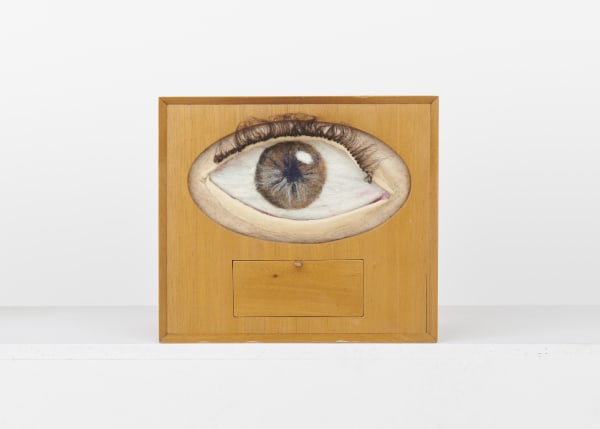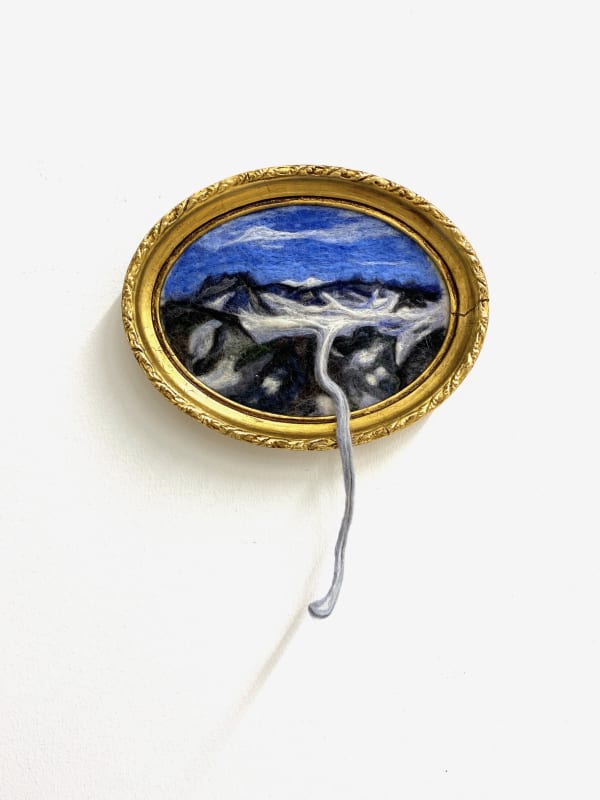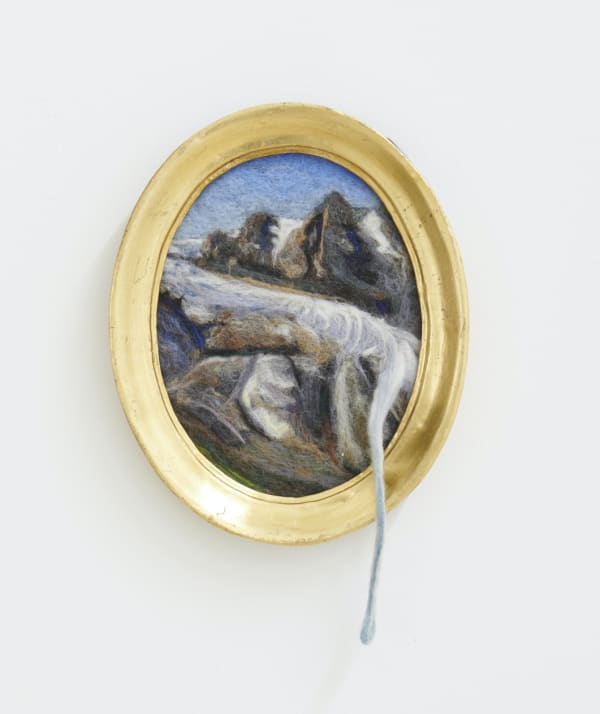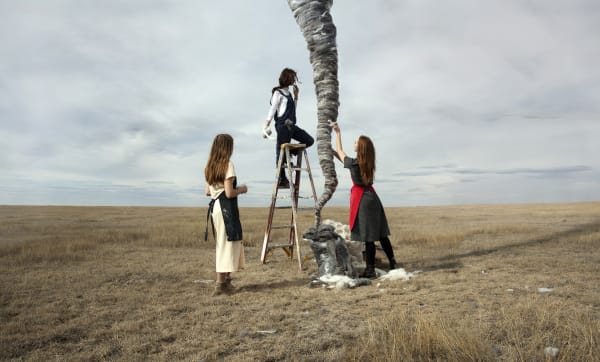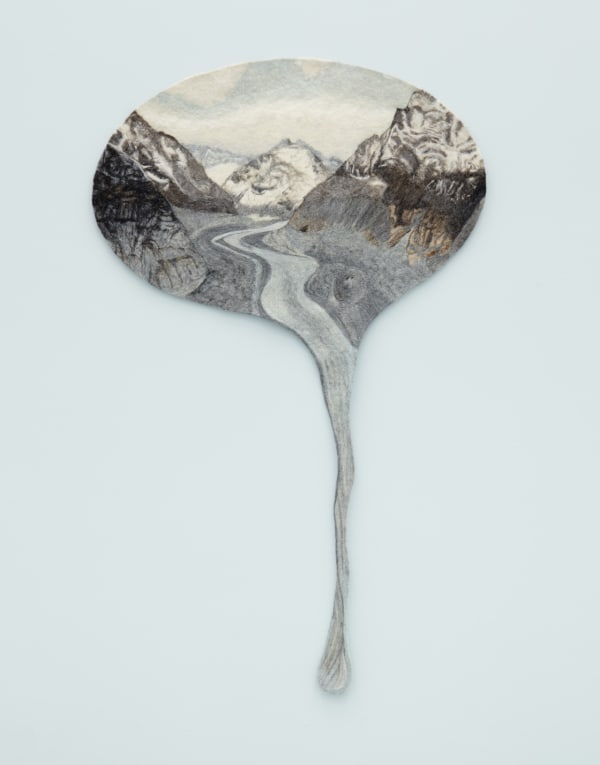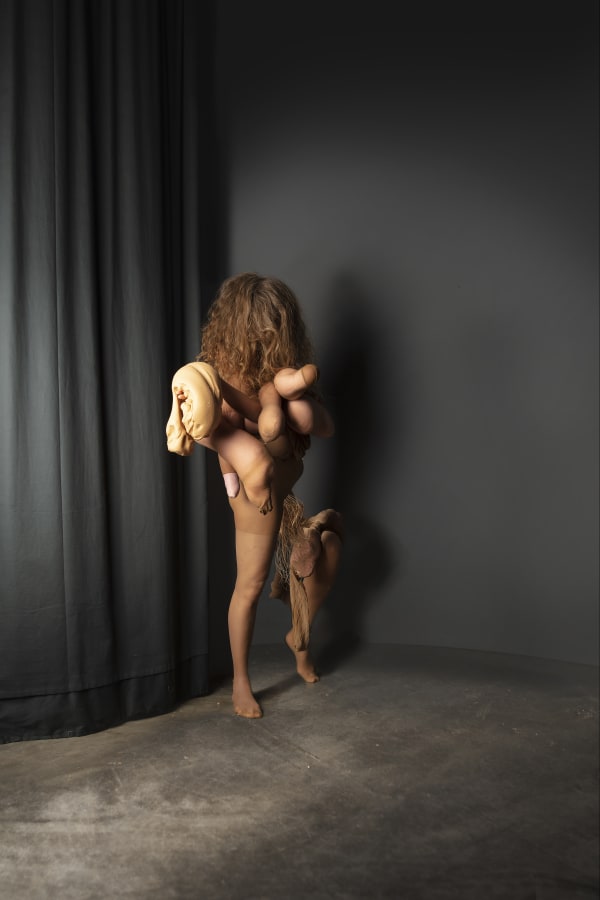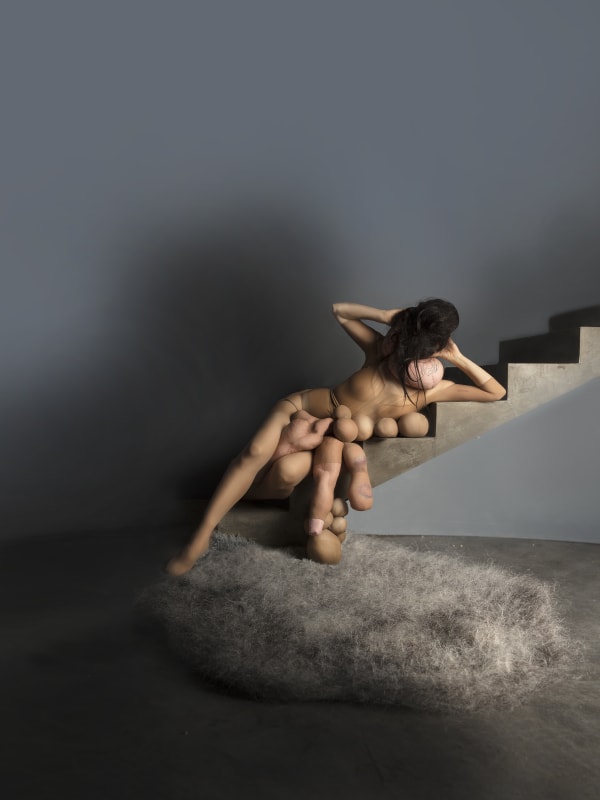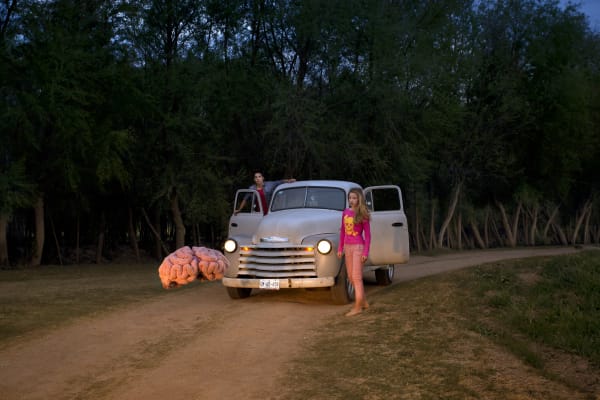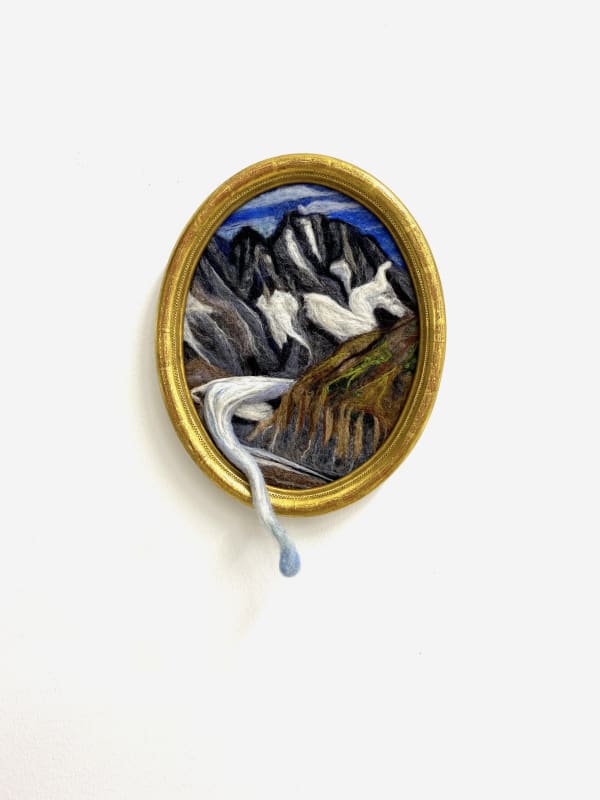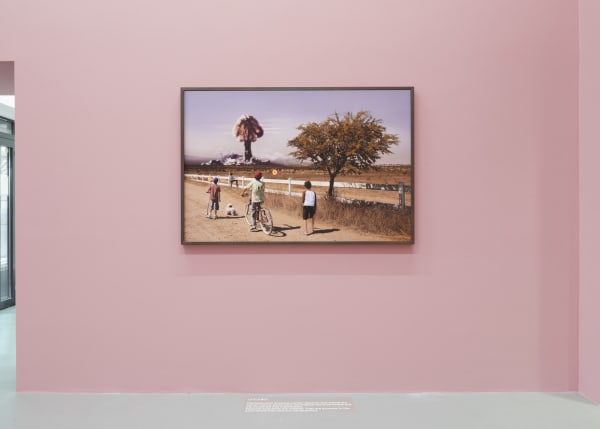-
 Daniela Edburg, Autoimmune, 2018%3Cspan%20class%3D%22title%22%3E%3Cspan%20class%3D%22artist%22%3EDaniela%20Edburg%3Cspan%20class%3D%22artist_comma%22%3E%3Cspan%20class%3D%22comma%22%3E%2C%20%3C/span%3E%3C/span%3E%3C/span%3E%3Cspan%20class%3D%22title%22%3EAutoimmune%3Cspan%20class%3D%22title_comma%22%3E%3Cspan%20class%3D%22comma%22%3E%2C%20%3C/span%3E%3C/span%3E%3C/span%3E%3Cspan%20class%3D%22year%22%3E2018%3C/span%3E%3C/span%3E
Daniela Edburg, Autoimmune, 2018%3Cspan%20class%3D%22title%22%3E%3Cspan%20class%3D%22artist%22%3EDaniela%20Edburg%3Cspan%20class%3D%22artist_comma%22%3E%3Cspan%20class%3D%22comma%22%3E%2C%20%3C/span%3E%3C/span%3E%3C/span%3E%3Cspan%20class%3D%22title%22%3EAutoimmune%3Cspan%20class%3D%22title_comma%22%3E%3Cspan%20class%3D%22comma%22%3E%2C%20%3C/span%3E%3C/span%3E%3C/span%3E%3Cspan%20class%3D%22year%22%3E2018%3C/span%3E%3C/span%3E -
 Daniela Edburg, Breakfast with Breasts, 2011
Daniela Edburg, Breakfast with Breasts, 2011 -
 Daniela Edburg, Breakfast with Razor, 2012
Daniela Edburg, Breakfast with Razor, 2012 -
 Daniela Edburg, Breakfast with Sardines, 2011%3Cspan%20class%3D%22title%22%3E%3Cspan%20class%3D%22artist%22%3EDaniela%20Edburg%3Cspan%20class%3D%22artist_comma%22%3E%3Cspan%20class%3D%22comma%22%3E%2C%20%3C/span%3E%3C/span%3E%3C/span%3E%3Cspan%20class%3D%22title%22%3EBreakfast%20with%20Sardines%3Cspan%20class%3D%22title_comma%22%3E%3Cspan%20class%3D%22comma%22%3E%2C%20%3C/span%3E%3C/span%3E%3C/span%3E%3Cspan%20class%3D%22year%22%3E2011%3C/span%3E%3C/span%3E
Daniela Edburg, Breakfast with Sardines, 2011%3Cspan%20class%3D%22title%22%3E%3Cspan%20class%3D%22artist%22%3EDaniela%20Edburg%3Cspan%20class%3D%22artist_comma%22%3E%3Cspan%20class%3D%22comma%22%3E%2C%20%3C/span%3E%3C/span%3E%3C/span%3E%3Cspan%20class%3D%22title%22%3EBreakfast%20with%20Sardines%3Cspan%20class%3D%22title_comma%22%3E%3Cspan%20class%3D%22comma%22%3E%2C%20%3C/span%3E%3C/span%3E%3C/span%3E%3Cspan%20class%3D%22year%22%3E2011%3C/span%3E%3C/span%3E
-
 Daniela Edburg, Eye, 2020
Daniela Edburg, Eye, 2020 -
 Daniela Edburg, Fiescher gletscher, 2020%3Cspan%20class%3D%22title%22%3E%3Cspan%20class%3D%22artist%22%3EDaniela%20Edburg%3Cspan%20class%3D%22artist_comma%22%3E%3Cspan%20class%3D%22comma%22%3E%2C%20%3C/span%3E%3C/span%3E%3C/span%3E%3Cspan%20class%3D%22title%22%3EFiescher%20gletscher%3Cspan%20class%3D%22title_comma%22%3E%3Cspan%20class%3D%22comma%22%3E%2C%20%3C/span%3E%3C/span%3E%3C/span%3E%3Cspan%20class%3D%22year%22%3E2020%3C/span%3E%3C/span%3E
Daniela Edburg, Fiescher gletscher, 2020%3Cspan%20class%3D%22title%22%3E%3Cspan%20class%3D%22artist%22%3EDaniela%20Edburg%3Cspan%20class%3D%22artist_comma%22%3E%3Cspan%20class%3D%22comma%22%3E%2C%20%3C/span%3E%3C/span%3E%3C/span%3E%3Cspan%20class%3D%22title%22%3EFiescher%20gletscher%3Cspan%20class%3D%22title_comma%22%3E%3Cspan%20class%3D%22comma%22%3E%2C%20%3C/span%3E%3C/span%3E%3C/span%3E%3Cspan%20class%3D%22year%22%3E2020%3C/span%3E%3C/span%3E -
 Daniela Edburg, Fiescher Gletscher, 2020
Daniela Edburg, Fiescher Gletscher, 2020 -
 Daniela Edburg, Glacier de la Plaine Morte, 2020
Daniela Edburg, Glacier de la Plaine Morte, 2020
-
 Daniela Edburg, Glacier de Moming, 2020
Daniela Edburg, Glacier de Moming, 2020 -
 Daniela Edburg, Glacier du Brenay, 2020%3Cspan%20class%3D%22title%22%3E%3Cspan%20class%3D%22artist%22%3EDaniela%20Edburg%3Cspan%20class%3D%22artist_comma%22%3E%3Cspan%20class%3D%22comma%22%3E%2C%20%3C/span%3E%3C/span%3E%3C/span%3E%3Cspan%20class%3D%22title%22%3EGlacier%20du%20Brenay%3Cspan%20class%3D%22title_comma%22%3E%3Cspan%20class%3D%22comma%22%3E%2C%20%3C/span%3E%3C/span%3E%3C/span%3E%3Cspan%20class%3D%22year%22%3E2020%3C/span%3E%3C/span%3E
Daniela Edburg, Glacier du Brenay, 2020%3Cspan%20class%3D%22title%22%3E%3Cspan%20class%3D%22artist%22%3EDaniela%20Edburg%3Cspan%20class%3D%22artist_comma%22%3E%3Cspan%20class%3D%22comma%22%3E%2C%20%3C/span%3E%3C/span%3E%3C/span%3E%3Cspan%20class%3D%22title%22%3EGlacier%20du%20Brenay%3Cspan%20class%3D%22title_comma%22%3E%3Cspan%20class%3D%22comma%22%3E%2C%20%3C/span%3E%3C/span%3E%3C/span%3E%3Cspan%20class%3D%22year%22%3E2020%3C/span%3E%3C/span%3E -
 Daniela Edburg, Glacier d’Otemma, 2020
Daniela Edburg, Glacier d’Otemma, 2020 -
 Daniela Edburg, Glacier Sample (Mer de Glace), 2019%3Cspan%20class%3D%22title%22%3E%3Cspan%20class%3D%22artist%22%3EDaniela%20Edburg%3Cspan%20class%3D%22artist_comma%22%3E%3Cspan%20class%3D%22comma%22%3E%2C%20%3C/span%3E%3C/span%3E%3C/span%3E%3Cspan%20class%3D%22title%22%3EGlacier%20Sample%20%28Mer%20de%20Glace%29%3Cspan%20class%3D%22title_comma%22%3E%3Cspan%20class%3D%22comma%22%3E%2C%20%3C/span%3E%3C/span%3E%3C/span%3E%3Cspan%20class%3D%22year%22%3E2019%3C/span%3E%3C/span%3E
Daniela Edburg, Glacier Sample (Mer de Glace), 2019%3Cspan%20class%3D%22title%22%3E%3Cspan%20class%3D%22artist%22%3EDaniela%20Edburg%3Cspan%20class%3D%22artist_comma%22%3E%3Cspan%20class%3D%22comma%22%3E%2C%20%3C/span%3E%3C/span%3E%3C/span%3E%3Cspan%20class%3D%22title%22%3EGlacier%20Sample%20%28Mer%20de%20Glace%29%3Cspan%20class%3D%22title_comma%22%3E%3Cspan%20class%3D%22comma%22%3E%2C%20%3C/span%3E%3C/span%3E%3C/span%3E%3Cspan%20class%3D%22year%22%3E2019%3C/span%3E%3C/span%3E
-
 Daniela Edburg, Gorner gletscher, 2020
Daniela Edburg, Gorner gletscher, 2020 -
 Daniela Edburg, Grassland Tornado, 2016%3Cspan%20class%3D%22title%22%3E%3Cspan%20class%3D%22artist%22%3EDaniela%20Edburg%3Cspan%20class%3D%22artist_comma%22%3E%3Cspan%20class%3D%22comma%22%3E%2C%20%3C/span%3E%3C/span%3E%3C/span%3E%3Cspan%20class%3D%22title%22%3EGrassland%20Tornado%3Cspan%20class%3D%22title_comma%22%3E%3Cspan%20class%3D%22comma%22%3E%2C%20%3C/span%3E%3C/span%3E%3C/span%3E%3Cspan%20class%3D%22year%22%3E2016%3C/span%3E%3C/span%3E
Daniela Edburg, Grassland Tornado, 2016%3Cspan%20class%3D%22title%22%3E%3Cspan%20class%3D%22artist%22%3EDaniela%20Edburg%3Cspan%20class%3D%22artist_comma%22%3E%3Cspan%20class%3D%22comma%22%3E%2C%20%3C/span%3E%3C/span%3E%3C/span%3E%3Cspan%20class%3D%22title%22%3EGrassland%20Tornado%3Cspan%20class%3D%22title_comma%22%3E%3Cspan%20class%3D%22comma%22%3E%2C%20%3C/span%3E%3C/span%3E%3C/span%3E%3Cspan%20class%3D%22year%22%3E2016%3C/span%3E%3C/span%3E -
 Daniela Edburg, Grindelwald Gletscher, 2020%3Cspan%20class%3D%22title%22%3E%3Cspan%20class%3D%22artist%22%3EDaniela%20Edburg%3Cspan%20class%3D%22artist_comma%22%3E%3Cspan%20class%3D%22comma%22%3E%2C%20%3C/span%3E%3C/span%3E%3C/span%3E%3Cspan%20class%3D%22title%22%3EGrindelwald%20Gletscher%3Cspan%20class%3D%22title_comma%22%3E%3Cspan%20class%3D%22comma%22%3E%2C%20%3C/span%3E%3C/span%3E%3C/span%3E%3Cspan%20class%3D%22year%22%3E2020%3C/span%3E%3C/span%3E
Daniela Edburg, Grindelwald Gletscher, 2020%3Cspan%20class%3D%22title%22%3E%3Cspan%20class%3D%22artist%22%3EDaniela%20Edburg%3Cspan%20class%3D%22artist_comma%22%3E%3Cspan%20class%3D%22comma%22%3E%2C%20%3C/span%3E%3C/span%3E%3C/span%3E%3Cspan%20class%3D%22title%22%3EGrindelwald%20Gletscher%3Cspan%20class%3D%22title_comma%22%3E%3Cspan%20class%3D%22comma%22%3E%2C%20%3C/span%3E%3C/span%3E%3C/span%3E%3Cspan%20class%3D%22year%22%3E2020%3C/span%3E%3C/span%3E -
 Daniela Edburg, Grosser Aletsch Gletscher, 2020
Daniela Edburg, Grosser Aletsch Gletscher, 2020
-
 Daniela Edburg, Inflammation, 2018%3Cspan%20class%3D%22title%22%3E%3Cspan%20class%3D%22artist%22%3EDaniela%20Edburg%3Cspan%20class%3D%22artist_comma%22%3E%3Cspan%20class%3D%22comma%22%3E%2C%20%3C/span%3E%3C/span%3E%3C/span%3E%3Cspan%20class%3D%22title%22%3EInflammation%3Cspan%20class%3D%22title_comma%22%3E%3Cspan%20class%3D%22comma%22%3E%2C%20%3C/span%3E%3C/span%3E%3C/span%3E%3Cspan%20class%3D%22year%22%3E2018%3C/span%3E%3C/span%3E
Daniela Edburg, Inflammation, 2018%3Cspan%20class%3D%22title%22%3E%3Cspan%20class%3D%22artist%22%3EDaniela%20Edburg%3Cspan%20class%3D%22artist_comma%22%3E%3Cspan%20class%3D%22comma%22%3E%2C%20%3C/span%3E%3C/span%3E%3C/span%3E%3Cspan%20class%3D%22title%22%3EInflammation%3Cspan%20class%3D%22title_comma%22%3E%3Cspan%20class%3D%22comma%22%3E%2C%20%3C/span%3E%3C/span%3E%3C/span%3E%3Cspan%20class%3D%22year%22%3E2018%3C/span%3E%3C/span%3E -
 Daniela Edburg, Little Boy, 2008%3Cspan%20class%3D%22artist%22%3E%3Cstrong%3EDaniela%20Edburg%3C/strong%3E%3C/span%3E%3Cspan%20class%3D%22comma%22%3E%2C%20%3C/span%3E%3Cspan%20class%3D%22title%22%3E%3Cem%3ELittle%20Boy%3C/em%3E%3Cspan%20class%3D%22comma%22%3E%2C%20%3C/span%3E2008%3C/span%3E
Daniela Edburg, Little Boy, 2008%3Cspan%20class%3D%22artist%22%3E%3Cstrong%3EDaniela%20Edburg%3C/strong%3E%3C/span%3E%3Cspan%20class%3D%22comma%22%3E%2C%20%3C/span%3E%3Cspan%20class%3D%22title%22%3E%3Cem%3ELittle%20Boy%3C/em%3E%3Cspan%20class%3D%22comma%22%3E%2C%20%3C/span%3E2008%3C/span%3E -
 Daniela Edburg, Map, 2020
Daniela Edburg, Map, 2020 -
 Daniela Edburg, Mer de Glace, 2020
Daniela Edburg, Mer de Glace, 2020
-
 Daniela Edburg, Saas Fee Gletscher, 2020%3Cspan%20class%3D%22title%22%3E%3Cspan%20class%3D%22artist%22%3EDaniela%20Edburg%3Cspan%20class%3D%22artist_comma%22%3E%3Cspan%20class%3D%22comma%22%3E%2C%20%3C/span%3E%3C/span%3E%3C/span%3E%3Cspan%20class%3D%22title%22%3ESaas%20Fee%20Gletscher%3Cspan%20class%3D%22title_comma%22%3E%3Cspan%20class%3D%22comma%22%3E%2C%20%3C/span%3E%3C/span%3E%3C/span%3E%3Cspan%20class%3D%22year%22%3E2020%3C/span%3E%3C/span%3E
Daniela Edburg, Saas Fee Gletscher, 2020%3Cspan%20class%3D%22title%22%3E%3Cspan%20class%3D%22artist%22%3EDaniela%20Edburg%3Cspan%20class%3D%22artist_comma%22%3E%3Cspan%20class%3D%22comma%22%3E%2C%20%3C/span%3E%3C/span%3E%3C/span%3E%3Cspan%20class%3D%22title%22%3ESaas%20Fee%20Gletscher%3Cspan%20class%3D%22title_comma%22%3E%3Cspan%20class%3D%22comma%22%3E%2C%20%3C/span%3E%3C/span%3E%3C/span%3E%3Cspan%20class%3D%22year%22%3E2020%3C/span%3E%3C/span%3E -
 Daniela Edburg, Study of three figures with autoimmune disease (After Bacon) - Figure A, 2018%3Cspan%20class%3D%22title%22%3E%3Cspan%20class%3D%22artist%22%3EDaniela%20Edburg%3Cspan%20class%3D%22artist_comma%22%3E%3Cspan%20class%3D%22comma%22%3E%2C%20%3C/span%3E%3C/span%3E%3C/span%3E%3Cspan%20class%3D%22title%22%3EStudy%20of%20three%20figures%20with%20autoimmune%20disease%20%28After%20Bacon%29%20-%20Figure%20A%3Cspan%20class%3D%22title_comma%22%3E%3Cspan%20class%3D%22comma%22%3E%2C%20%3C/span%3E%3C/span%3E%3C/span%3E%3Cspan%20class%3D%22year%22%3E2018%3C/span%3E%3C/span%3E
Daniela Edburg, Study of three figures with autoimmune disease (After Bacon) - Figure A, 2018%3Cspan%20class%3D%22title%22%3E%3Cspan%20class%3D%22artist%22%3EDaniela%20Edburg%3Cspan%20class%3D%22artist_comma%22%3E%3Cspan%20class%3D%22comma%22%3E%2C%20%3C/span%3E%3C/span%3E%3C/span%3E%3Cspan%20class%3D%22title%22%3EStudy%20of%20three%20figures%20with%20autoimmune%20disease%20%28After%20Bacon%29%20-%20Figure%20A%3Cspan%20class%3D%22title_comma%22%3E%3Cspan%20class%3D%22comma%22%3E%2C%20%3C/span%3E%3C/span%3E%3C/span%3E%3Cspan%20class%3D%22year%22%3E2018%3C/span%3E%3C/span%3E -
 Daniela Edburg, Study of three figures with autoimmune disease (After Bacon) - Figure B, 2018
Daniela Edburg, Study of three figures with autoimmune disease (After Bacon) - Figure B, 2018 -
 Daniela Edburg, Study of three figures with autoimmune disease (After Bacon) - Figure C, 2018%3Cspan%20class%3D%22title%22%3E%3Cspan%20class%3D%22artist%22%3EDaniela%20Edburg%3Cspan%20class%3D%22artist_comma%22%3E%3Cspan%20class%3D%22comma%22%3E%2C%20%3C/span%3E%3C/span%3E%3C/span%3E%3Cspan%20class%3D%22title%22%3EStudy%20of%20three%20figures%20with%20autoimmune%20disease%20%28After%20Bacon%29%20-%20Figure%20C%3Cspan%20class%3D%22title_comma%22%3E%3Cspan%20class%3D%22comma%22%3E%2C%20%3C/span%3E%3C/span%3E%3C/span%3E%3Cspan%20class%3D%22year%22%3E2018%3C/span%3E%3C/span%3E
Daniela Edburg, Study of three figures with autoimmune disease (After Bacon) - Figure C, 2018%3Cspan%20class%3D%22title%22%3E%3Cspan%20class%3D%22artist%22%3EDaniela%20Edburg%3Cspan%20class%3D%22artist_comma%22%3E%3Cspan%20class%3D%22comma%22%3E%2C%20%3C/span%3E%3C/span%3E%3C/span%3E%3Cspan%20class%3D%22title%22%3EStudy%20of%20three%20figures%20with%20autoimmune%20disease%20%28After%20Bacon%29%20-%20Figure%20C%3Cspan%20class%3D%22title_comma%22%3E%3Cspan%20class%3D%22comma%22%3E%2C%20%3C/span%3E%3C/span%3E%3C/span%3E%3Cspan%20class%3D%22year%22%3E2018%3C/span%3E%3C/span%3E
-
 Daniela Edburg, The Hovering Brain, 2013
Daniela Edburg, The Hovering Brain, 2013 -
 Daniela Edburg, Tilly & The Kidney, 2010
Daniela Edburg, Tilly & The Kidney, 2010 -
 Daniela Edburg, Trift Gletscher, 2020%3Cspan%20class%3D%22title%22%3E%3Cspan%20class%3D%22artist%22%3EDaniela%20Edburg%3Cspan%20class%3D%22artist_comma%22%3E%3Cspan%20class%3D%22comma%22%3E%2C%20%3C/span%3E%3C/span%3E%3C/span%3E%3Cspan%20class%3D%22title%22%3ETrift%20Gletscher%3Cspan%20class%3D%22title_comma%22%3E%3Cspan%20class%3D%22comma%22%3E%2C%20%3C/span%3E%3C/span%3E%3C/span%3E%3Cspan%20class%3D%22year%22%3E2020%3C/span%3E%3C/span%3E
Daniela Edburg, Trift Gletscher, 2020%3Cspan%20class%3D%22title%22%3E%3Cspan%20class%3D%22artist%22%3EDaniela%20Edburg%3Cspan%20class%3D%22artist_comma%22%3E%3Cspan%20class%3D%22comma%22%3E%2C%20%3C/span%3E%3C/span%3E%3C/span%3E%3Cspan%20class%3D%22title%22%3ETrift%20Gletscher%3Cspan%20class%3D%22title_comma%22%3E%3Cspan%20class%3D%22comma%22%3E%2C%20%3C/span%3E%3C/span%3E%3C/span%3E%3Cspan%20class%3D%22year%22%3E2020%3C/span%3E%3C/span%3E -
 Daniela Edburg, Unteraar Gletscher, 2020%3Cspan%20class%3D%22title%22%3E%3Cspan%20class%3D%22artist%22%3EDaniela%20Edburg%3Cspan%20class%3D%22artist_comma%22%3E%3Cspan%20class%3D%22comma%22%3E%2C%20%3C/span%3E%3C/span%3E%3C/span%3E%3Cspan%20class%3D%22title%22%3EUnteraar%20Gletscher%3Cspan%20class%3D%22title_comma%22%3E%3Cspan%20class%3D%22comma%22%3E%2C%20%3C/span%3E%3C/span%3E%3C/span%3E%3Cspan%20class%3D%22year%22%3E2020%3C/span%3E%3C/span%3E
Daniela Edburg, Unteraar Gletscher, 2020%3Cspan%20class%3D%22title%22%3E%3Cspan%20class%3D%22artist%22%3EDaniela%20Edburg%3Cspan%20class%3D%22artist_comma%22%3E%3Cspan%20class%3D%22comma%22%3E%2C%20%3C/span%3E%3C/span%3E%3C/span%3E%3Cspan%20class%3D%22title%22%3EUnteraar%20Gletscher%3Cspan%20class%3D%22title_comma%22%3E%3Cspan%20class%3D%22comma%22%3E%2C%20%3C/span%3E%3C/span%3E%3C/span%3E%3Cspan%20class%3D%22year%22%3E2020%3C/span%3E%3C/span%3E
-

© Guillaume Python
%3Cp%3E%26copy%3B%20Guillaume%20Python%3C/p%3E -

© Guillaume Python
%3Cp%3E%26copy%3B%20Guillaume%20Python%3C/p%3E -

© Guillaume Python
%3Cp%3E%26copy%3B%20Guillaume%20Python%3C/p%3E -

© Guillaume Python
%3Cp%3E%26copy%3B%20Guillaume%20Python%3C/p%3E
Fabienne Levy Gallery is pleased to announce the opening of the first solo show in Switzerland of the artist Daniela Edburg. The artist was born in Houston, USA in 1975. She lives and works in San Miguel de Allende, Mexico.
In the summer of 2016, Daniela found herself frozen in bed for over 3 months, diagnosed with an autoimmune disease. She felt like her whole skin was a hematoma, like every inch of her body was a living, breathing, bruise. It was during this time she picked up the novel Frankenstein, written in 1816 by Mary Shelley in the swiss alps. It was the harsh beauty of the alpine landscape that provided the stage for one of the most dramatic descriptive passages of the novel, where Victor Frankenstein narrates the encounter with his creature. The scene raises the question: What are the responsibilities a creator has towards their creation?
The novel resonated on many levels, in Shelley’s fiction and in today’s world, it is clear that the monster is not the creature, it is irresponsibility, abandonment and the lack of empathy by its creator. As Edburg learned to navigate her recovering body through many changes, she continued her investigations and planned a trip to the Alps to visit the Mer de Glace mentioned in the novel. She found it heartbreakingly diminished. A mere ghost of that glacier which was once “rising like the waves of a troubled sea, descending low, interspersed by rifts that sink deep”. It was the first of many more trips to visit the alpine glaciers, and the beginning of months of work to capture their likeness in felt.
The exhibition features two recent set of works:
The glaciers, made specially for the solo show, all handmade by the artist. The largest glacier in the first room, represent the infamous glacier Mer de Glace, depicted in Frankenstein, a monster slowly dying out. The other ones, presented in the pink room, are reproductions of Swiss glaciers at their actual state. Shown as the last memory before their disappearance.
Autoimmune, monsters created from Daniela’s personal experience, are an attempt to map out the body. Looking at patterns in physical and mental symptoms, she proposes to view illness as information, resisting the usual alienation and disconnection brought on by these conditions. In this way she brings it all back to Frankenstein, looking for connection by embracing the monster, be it in a desolate landscape or in the domestic setting of her own kitchen.
Earlier works are also presented throughout the show, the Breakfast pieces, Little Boy, Grassland Tornado and the hovering brain; these initially innocuous works are dosed with absurdity, surprise and fear. Edburg blurs the lines between fantasy and reality to the point they seem contradictory.
This exhibition is a deep reflection on how we perceive the world and who we become. We can’t separate our thoughts from our behavior.



